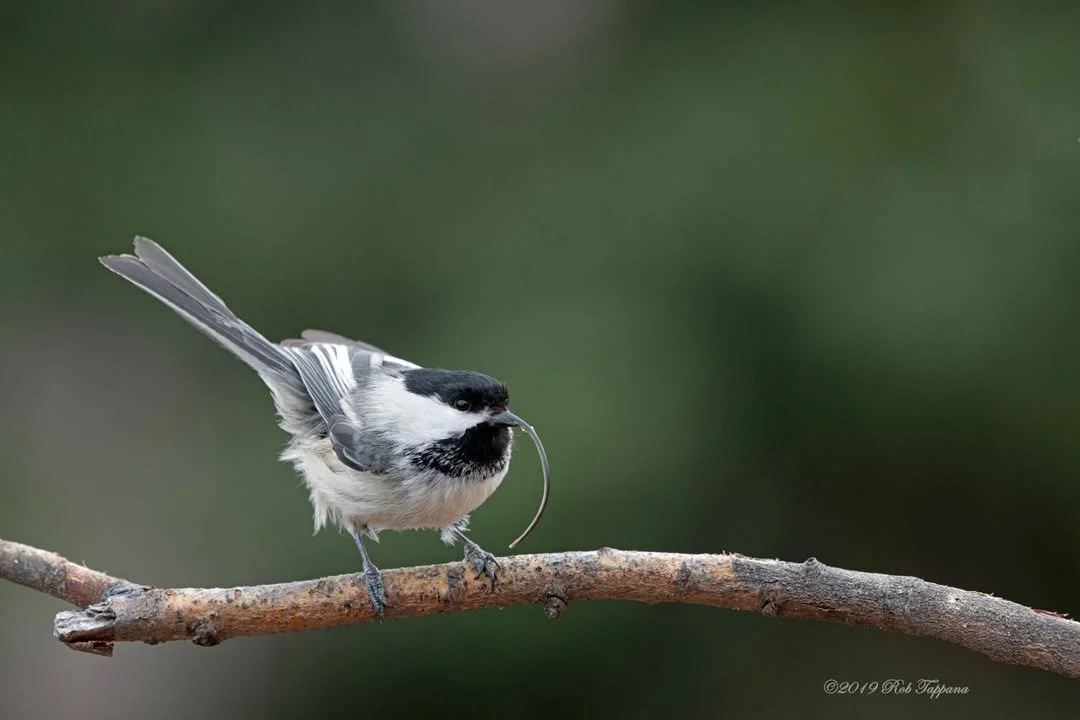Author: J.K. Ullrich
Imagine if your teeth would not stop growing. They elongate over your face like tusks, lower and upper sets curling in opposite directions. Twisted teeth make it difficult to eat, drink, and speak. Even when your dentist files them down, they just grow out again. How would you manage? This is the fate of birds with avian keratin disorder (AKD), a beak deformity first observed in Alaska in the late 1990s.
The emergence of Black-capped Chickadees and Northwestern Crows with deformed beaks alarmed birdwatchers and ornithologists alike. Some birds’ beaks became long and thin like Pinocchio’s nose. In others, one half of the beak outgrew and overlapped the other. Afflicted birds struggled to eat, preen, and perform other behaviors essential to their survival. Studies between 1999 and 2008 found symptoms in 6.5% of Alaska’s Black-capped Chickadees. Almost 17% of Alaska’s Northwestern Crow population displayed the characteristic bill overgrowth, with instances as high as 36% in the Kenai Peninsula.
Black-capped Chickadee with Avian Keratin Disorder. Photo credit: Rob Tapanna
Scientists termed the new bird disease AKD. It appeared in at least 28 other Alaskan species, from woodpeckers and nuthatches to jays and magpies. As the disease spread to new hosts, it also spread to new regions. Freaky beaks were reported in Canada and the Pacific Northwest, then the lower forty-eight states. A few cases were even documented in Europe and Asia. What caused this debilitating condition? Researchers spent 20 years hunting for answers. Bacterial and fungal infections, nutritional deficiencies, and physical damage all proved innocent. AKD remained elusive.
Then, in 2016, a team from the California Academy of Sciences, University of California San Francisco (UCSF), and the U.S. Geological Survey (USGS) used new genetic techniques to search for pathogens in AKD samples from Alaska. They identified a previously unknown virus. Based on those results, the team tested 28 birds with bill deformities and 96 without deformities. The virus appeared in all the affected birds, but in less than 10% of the control cases. Could this be the culprit?
The researchers named their discovery Poecivirus, after the genus of black-capped chickadee (Poecile atricapillus) in which AKD was first documented. It belongs to the picornavirus family, whose other infamous members cause human illnesses such as polio, hepatitis A, and the common cold. The International Committee on Taxonomy of Viruses officially recognized the new find in 2020. Ongoing investigations seek to confirm whether Poecivirus causes AKD, its effects on beak growth, and how it is transmitted.
Nuthatch with Avian Keratin Disorder. Photo credit: Rob Tappana
Bird diseases often spread at congregation sites like bird feeders. If you spot a bird with a deformed beak at your seed station, take the feeder down and clean it, then quarantine it for several weeks before putting it out again. Consider contacting BirdTLC if the affected bird is too ill to fly. Sadly, since there is no known treatment for AKD, humane euthanasia is the only option for these birds. But learning more about Poecivirus may lead to better outcomes.
You can help by reporting observations of birds with unusually curved or elongated beaks to the USGS. These data points provide insight into AKD’s geographical patterns and species vulnerable to infection. It took twenty years to uncover the potential cause of AKD: with support from citizen scientists, it hopefully won’t take that long to develop a cure.


